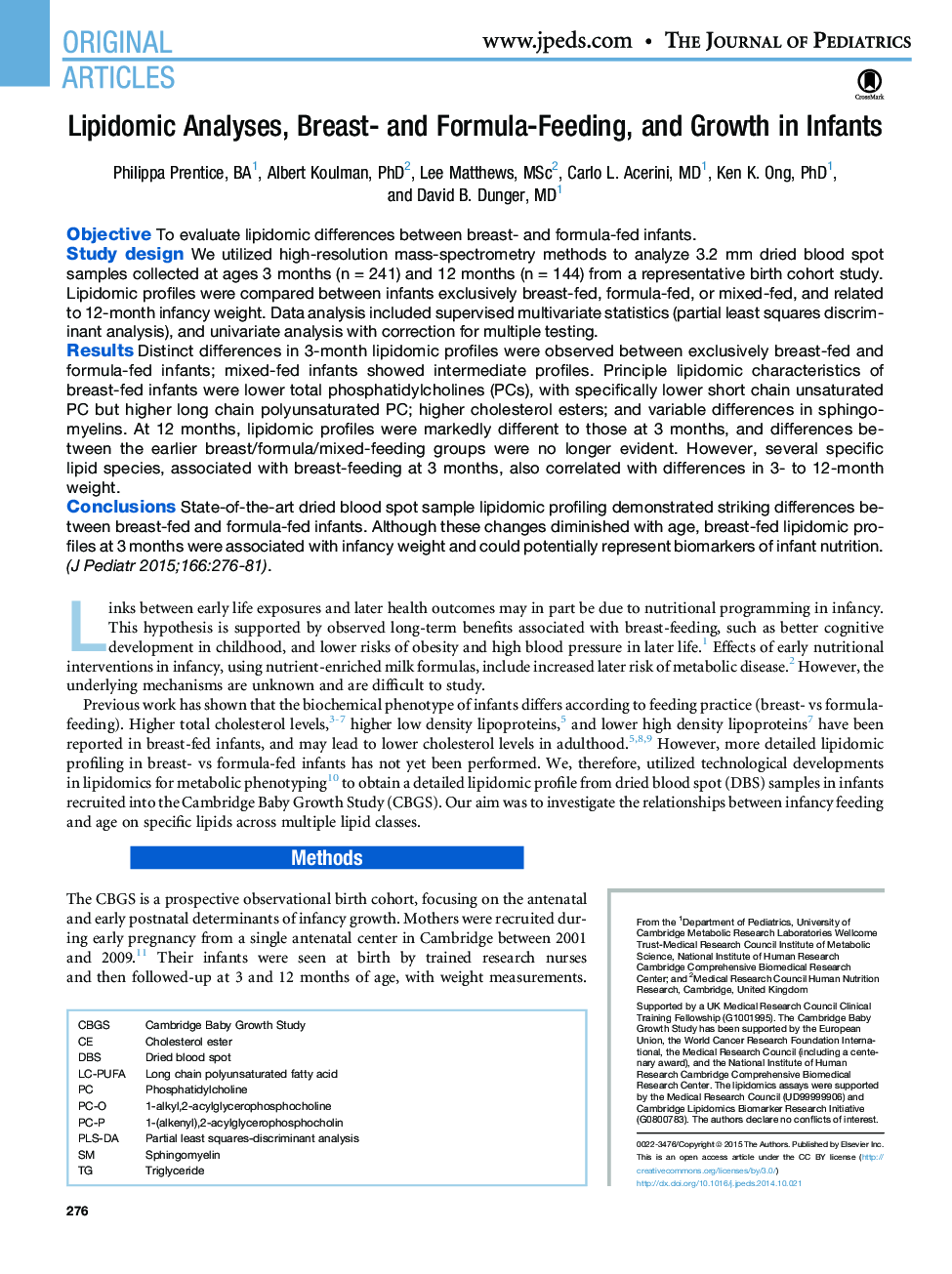| کد مقاله | کد نشریه | سال انتشار | مقاله انگلیسی | نسخه تمام متن |
|---|---|---|---|---|
| 6221666 | 1607446 | 2015 | 12 صفحه PDF | دانلود رایگان |
ObjectiveTo evaluate lipidomic differences between breast- and formula-fed infants.Study designWe utilized high-resolution mass-spectrometry methods to analyze 3.2 mm dried blood spot samples collected at ages 3 months (n = 241) and 12 months (n = 144) from a representative birth cohort study. Lipidomic profiles were compared between infants exclusively breast-fed, formula-fed, or mixed-fed, and related to 12-month infancy weight. Data analysis included supervised multivariate statistics (partial least squares discriminant analysis), and univariate analysis with correction for multiple testing.ResultsDistinct differences in 3-month lipidomic profiles were observed between exclusively breast-fed and formula-fed infants; mixed-fed infants showed intermediate profiles. Principle lipidomic characteristics of breast-fed infants were lower total phosphatidylcholines (PCs), with specifically lower short chain unsaturated PC but higher long chain polyunsaturated PC; higher cholesterol esters; and variable differences in sphingomyelins. At 12 months, lipidomic profiles were markedly different to those at 3 months, and differences between the earlier breast/formula/mixed-feeding groups were no longer evident. However, several specific lipid species, associated with breast-feeding at 3 months, also correlated with differences in 3- to 12-month weight.ConclusionsState-of-the-art dried blood spot sample lipidomic profiling demonstrated striking differences between breast-fed and formula-fed infants. Although these changes diminished with age, breast-fed lipidomic profiles at 3 months were associated with infancy weight and could potentially represent biomarkers of infant nutrition.
Journal: The Journal of Pediatrics - Volume 166, Issue 2, February 2015, Pages 276-281.e6
